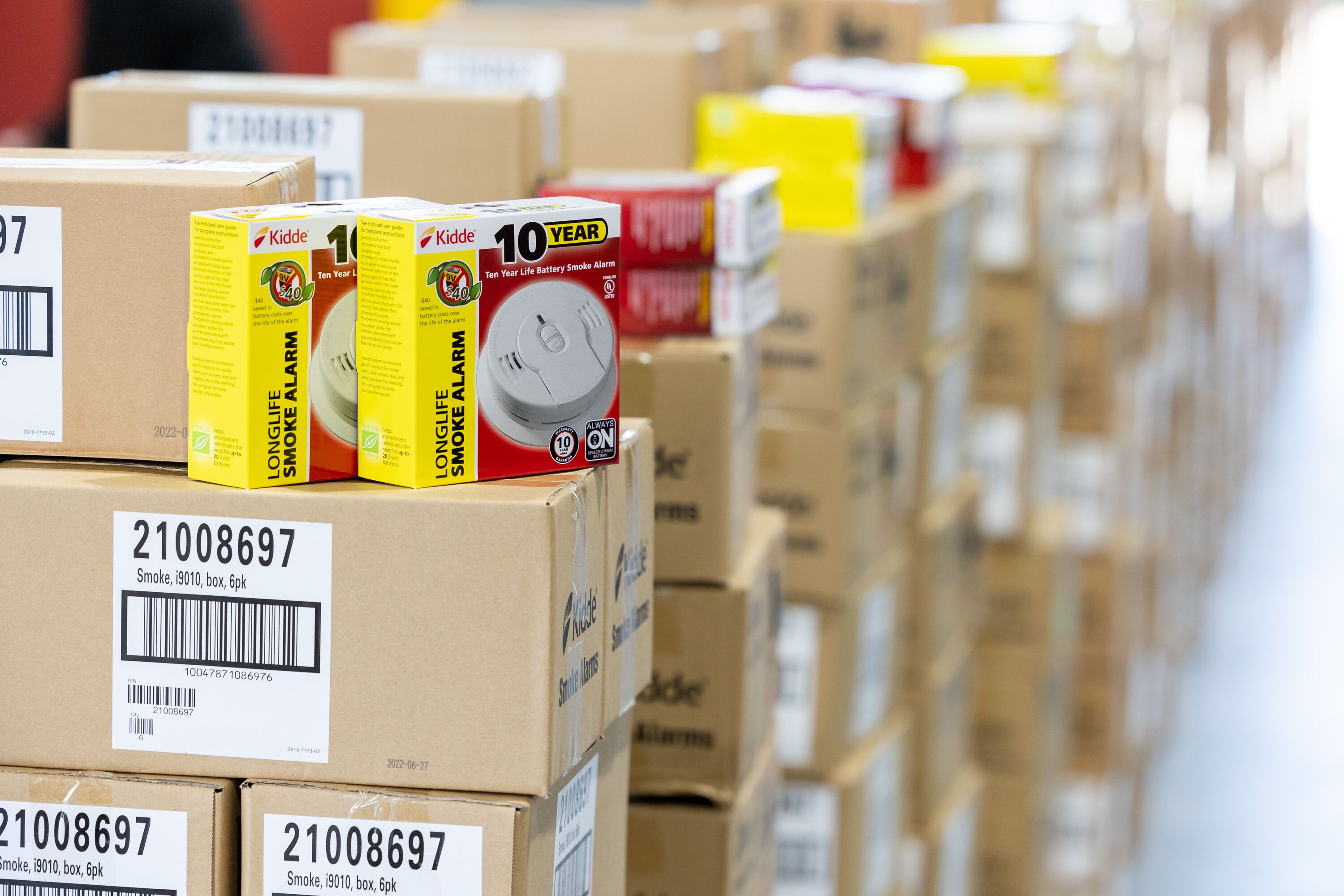Kidde Donates 1,000 Carbon Monoxide & Smoke Alarms to Houston Fire Department in Wake of Power Outages
Devastation from Winter Storm Uri continues in Texas. In Harris County, the state’s most populous county and home to Houston, hundreds of cases of carbon monoxide (CO) poisoning have been reported and thousands remain without power. In response, Kidde, in partnership with KTRK ABC-13 Houston, is donating 750 CO alarms and 250 smoke alarms to the Houston Fire Department as part of the Operation Save A Life program, a public service initiative designed to educate consumers on the dangers of fire and CO poisoning. Houston city and metro area residents can request an alarm by calling their local fire department. Kidde is a leading manufacturer of residential smoke alarms, carbon monoxide alarms, fire extinguishers, and safety accessories, and is a part of Carrier Global Corporation (NYSE: CARR), the leading global provider of healthy, safe and sustainable building and cold chain solutions.

Often called “the silent killer,” CO is a colorless, odorless, tasteless gas that can be lethal to humans and pets. The risk of unintentional CO poisoning increases when temperatures plunge and home heating systems run for longer than usual. CO poisoning can also result when appliances that use CO-producing sources – including natural gas, kerosene, propane, coal, and gasoline – are used incorrectly or malfunction.
"During a power outage, people often turn to alternative ways to heat and light their homes but if used incorrectly, it can have devastating effects,” said Stephanie Berzinski, Marketing and Communications Manager for Kidde. “It’s extremely important that people remain mindful of potential CO and fire dangers and how to avoid them, which includes installing CO alarms throughout the home.”
To help protect people and pets from CO and fire hazards before, during and after a winter storm, Kidde shares the following advice:
- Before a storm,test all smoke and CO alarms and fire extinguisher gauges to ensure your home fire safety equipment is properly working. Replace if necessary.
- Place generators outdoors.Install your generator outdoors at least 20 feet from the home with the exhaust pointing away from the house. Only operate the generator outdoors in a well-ventilated dry area, away from air intakes to the home, and protected from direct exposure to rain. Follow the manufacturers’ instructions when using generators.
- Consider flameless candles.A safe alternative to traditional wick candles is battery-operated flameless candles. If using traditional candles, keep them at least 12 inches from anything flammable. Extinguish all candles when leaving a room or the house, or when going to sleep.
- Grill outdoors only.Place your grill at least 10 feet from the home and make sure it is clear of any vents that could carry CO into the home.
- The garage is not a CO-free space.Gasoline-powered cars can emit CO, even with the door open. Move running or idling cars at least 20 feet away from the home.
- Know the signs of CO poisoning.The most common symptoms of CO poisoning in people often mirror those of the common flu and include things like headaches, dizziness, weakness, nausea, vomiting, chest pain and confusion. In pets, initial symptoms include nausea/vomiting, dizziness, or labored breathing, among others. If your CO alarm sounds or you suspect CO in your home, evacuate your home immediately and call 911.
- Install CO alarms throughout the home.CO can travel anywhere in the home – even through drywall – so most often, one alarm is not enough. It's best to install CO alarms throughout the entire home with at least one on every level, and consider including in living areas, bedrooms and hallways outside sleeping areas.
- Replace alarms after 7-10 years, depending on the model.While testing alarms once a week and ensuring batteries are replaced are critical steps, replacing every alarm at a minimum of 7-10 years is paramount. If you cannot remember the date you installed your alarms, simply check the manufacturing date – commonly located on the back of the alarm – and add 7-10 years, depending on the model. Please check your manufacturer user guide.
For more CO and fire safety tips for your family and pets, visit kidde.com.
About Kidde
Kidde, a leading manufacturer of residential smoke alarms, carbon monoxide alarms, fire extinguishers, and safety accessories, has been keeping the world a safer place for over 100 years. Kidde produced the first integrated smoke detection system a century ago and continues its legacy today by delivering advanced fire-safety technology. Kidde is a part of Kidde Global Solutions, global leader in fire and life safety solutions.
For more information, visit kidde.com or follow @KiddeFireSafety on Facebook, Instagram, X, and LinkedIn. For media inquiries, contact Stephanie.Berzinski@kgsolutions.com.
Kidde Releases Powerful Plea from Child House Fire Survivors for Its Cause For Alarm Campaign
Kidde's 'Cause For Alarm' campaign features emotional pleas from child house fire survivors, urging families to prioritize fire safety.
Kidde Launches ‘Cause For Alarm™’ Campaign, Sounding The Alarm on Fire Safety Inequity
New fire safety campaign launches in Bronx, New York, with unveiling of Cey Adams’ mural; actor Jesse Williams lends his voice in support of addressing gaps in education and access to fire safety measures.
Kidde’s Cause for Alarm™ campaign, alongside Habitat for Humanity, addresses fire safety inequity in America
The risk of a house fire, or a fire-related death or injury, is not the same for everyone. Kidde's Cause for Alarm campaign and Habitat for Humanity are working to ensure families have access to life-saving products.